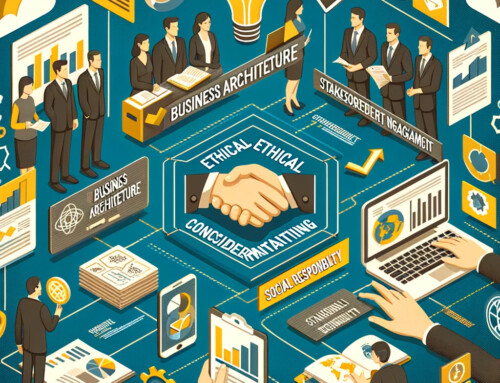A Brief Overview of TOGAF
What is TOGAF?
TOGAF, or The Open Group Architecture Framework, is a globally recognized framework for enterprise architecture. It provides a structured approach to designing, planning, implementing, and governing the architecture of an organization. Created by The Open Group, TOGAF is based on an iterative process model supported by best practices and a reusable set of existing architectural assets.
Describe the Scope of TOGAF
TOGAF’s scope is comprehensive and can be used in various organizational contexts. It encompasses four architecture domains: Business, Application, Data, and Technology. Together, these domains provide a holistic view of an enterprise.
- Business Architecture: This defines the business strategy, governance, organization, and key business processes.
- Application Architecture: This offers a blueprint for the application systems to be deployed, their interactions, and their relationships to the core business processes.
- Data Architecture: This describes the structure of an organization’s logical and physical data assets and data management resources.
- Technology Architecture: This details the hardware, software, and network infrastructure needed to support the deployment of core, mission-critical applications.
TOGAF also includes a set of tools, guidelines, templates, and resources that help in the enterprise architecture process.
Why Does One Need an Enterprise Architecture Framework?
An Enterprise Architecture Framework, like TOGAF, is vital for the following reasons:
- Alignment: It helps align the IT strategy with business goals, ensuring that technology serves the broader organizational objectives.
- Standardization: It provides a common language and standardized methodology that fosters clarity and collaboration across different parts of the organization.
- Efficiency: By offering a systematic approach, it reduces redundancy, optimizes resource utilization, and streamlines processes.
- Risk Management: It allows organizations to identify and mitigate potential risks in their architecture.
How can Enterprise Architects Use TOGAF for Creating and Managing Enterprise Architecture?
Enterprise architects use TOGAF by following its Architecture Development Method (ADM). ADM is a detailed step-by-step process that guides the entire lifecycle of an enterprise architecture. The phases of ADM include:
- Preliminary Phase: Defining the framework, principles, and scope.
- Architecture Vision: Creating a high-level vision of the architecture.
- Design and Implementation: Detailed planning and design of the architecture.
- Governance and Management: Ongoing management, monitoring, and governance.
By adhering to these phases, architects ensure that the architecture meets the organization’s needs, adheres to standards, and remains flexible and scalable.
What are the Benefits of Using TOGAF?
The benefits of using TOGAF include:
- Holistic Approach: TOGAF’s multi-domain structure ensures a comprehensive view of the enterprise, allowing for better decision-making.
- Customization: It is adaptable to the specific needs and culture of an organization.
- Cost-Effectiveness: Being an open standard, TOGAF is less expensive to implement compared to proprietary frameworks.
- Community Support: As a widely adopted framework, it enjoys strong community support, and there is a vast array of resources available.
What are the Criticisms of TOGAF?
Despite its benefits, TOGAF has faced criticism:
- Complexity: Some users find TOGAF overly complex and challenging to implement fully.
- Lack of Detail in Certain Areas: It may lack sufficient guidance in certain specific areas, requiring organizations to fill in the gaps.
- Potential Rigidity: Though intended to be customizable, some practitioners feel that TOGAF can be too prescriptive.
What are the Alternative Enterprise Architecture Frameworks?
TOGAF is not the only Enterprise Architecture Framework available. Alternatives include:
- Zachman Framework: Offers a more ontology-based approach.
- Federal Enterprise Architecture (FEA): Used by the U.S. Federal Government.
- Gartner’s Enterprise Architecture Framework: Focuses more on business strategy alignment.
Each alternative framework offers its unique approach, pros, and cons. The choice often depends on the specific needs, goals, and culture of the organization.
Conclusion
TOGAF is a widely recognized framework for enterprise architecture, providing a holistic, standardized, and structured approach. While it comes with distinct benefits like alignment with business goals and cost-effectiveness, it has also faced some criticisms such as complexity. Alternative frameworks exist, catering to different organizational needs. Ultimately, the success of implementing TOGAF or any other framework lies in understanding the organization’s unique requirements and leveraging the framework in a way that aligns with those needs.


